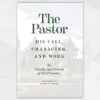How do we do good biblical theology in our preaching?
- Set each text within the overall narrative of Scripture. From the text, look backwards in the Bible and identify what covenantal promises may be relevant to the text at hand: promises to Abraham? Moses? David?
- Then look forward and consider how your text is fulfilled in the person and work of Christ.
- Identify continuities and discontinuities between the text’s stage within redemptive history and our own. For example, you may need to explain how Old Testament laws and prophecies relate to us in the light of Christ’s saving work, or how certain aspects of the life of Christ and the ministry of the apostles are unique and unrepeatable, and so on.
- Explain features of the text that tap into significant biblical-theological themes, such as creation and new creation, the land, Sabbath rest, kingship, covenant, sacrifice, and so on. They’re present in nearly every portion of Scripture and their development throughout Scripture gives shape to the entire Bible. Take the time to identify such themes as they appear in a text and explain their meaning in the present context.
- Connect a text to the gospel message itself. In one way or another, all of Scripture points to the person and work of Christ (Luke 24:27; John 5:39). Find a road from the text to the gospel and proclaim the gospel.
- Demonstrate the various ways the Old Testament and the New Testament relate to one another: promise and fulfillment, typology, and so on. Equip your people to understand how the whole Bible fits together by teaching them the different ways the Old and New Testaments interlock.
- Make sure that your application is informed by biblical theology. If you’re preaching in the Old Testament, move from the text to Christ to your people. Don’t skip over Christ in order to teach your people a moral lesson.







